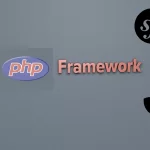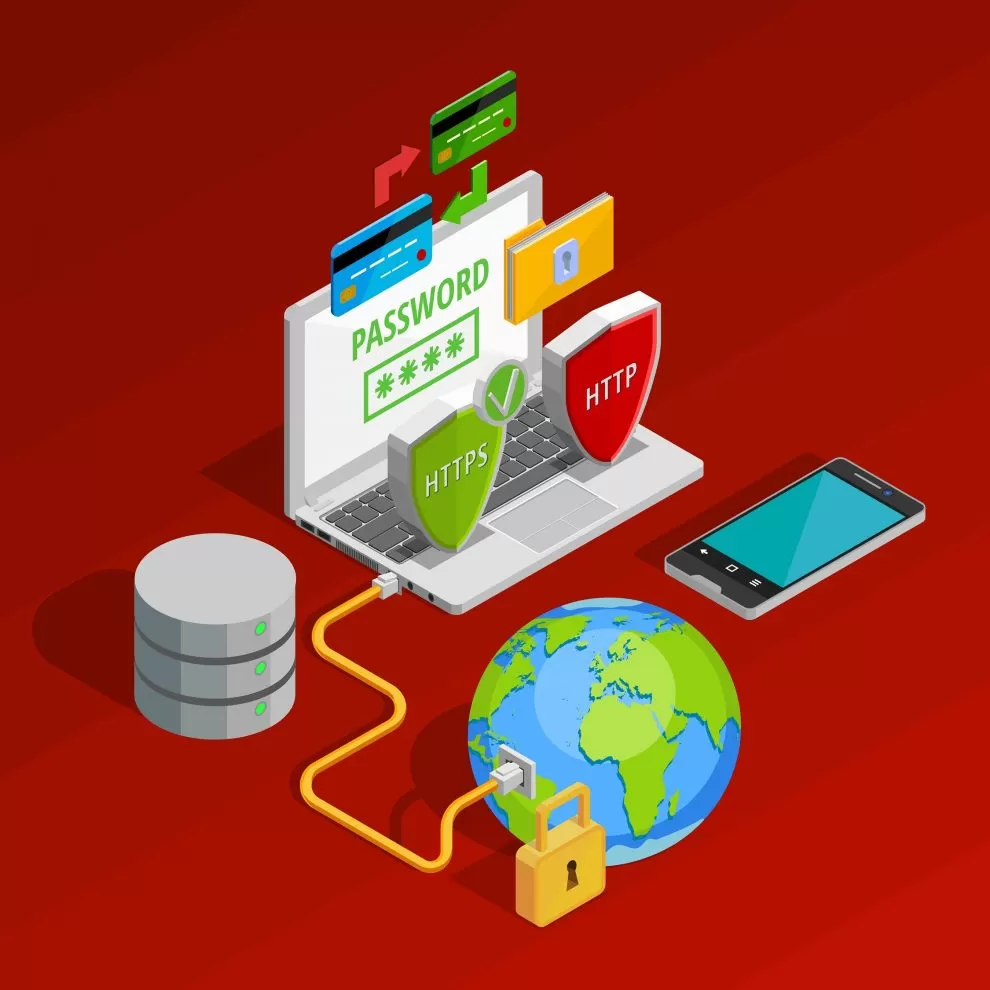Welcome to our guide on Laravel Security Best Practices, where we unravel the vital features and practices crucial for securing your PHP applications. In today’s digital realm, ensuring the safety and integrity of web applications is paramount. Laravel, a widely used PHP framework, offers a robust foundation to fortify your apps and mitigate potential security risks. In this article, we’ll delve into key aspects such as authentication, encryption, error handling, and more, shedding light on best practices that can elevate the security of your PHP apps developed with Laravel.
In this ever-evolving digital landscape, cybersecurity stands as a foundational concern for developers and users alike. Laravel Security Best Practices serve as a fundamental guide to bolster the security of PHP applications, empowering developers to build with confidence. Laravel, a renowned PHP framework, provides a plethora of built-in features and methodologies to ensure secure coding and robust application defenses. Throughout this guide, we will unravel the core principles and practices, exploring how they contribute to a more secure Laravel-powered web application. Let’s embark on this journey to fortify your PHP apps and uphold the highest standards of security in the dynamic world of web development.
Understanding the Significance of Laravel Security Best Practices
In the realm of web application development, the significance of Laravel Security Best Practices cannot be overstated. Laravel, a popular PHP framework, is renowned for its elegance, simplicity, and robust feature set. However, like any web application, those built with Laravel are susceptible to a range of security threats. This is where implementing Laravel Security Best Practices becomes critical.
Enhancing Application Security:
Laravel Security Best Practices encompass a set of guidelines and techniques designed to fortify your PHP applications against potential vulnerabilities and attacks. By adhering to these practices, developers can significantly reduce the risk of security breaches and unauthorized access, ultimately enhancing the overall security posture of their applications. From authentication and authorization to data encryption and error handling, these best practices cover a spectrum of areas crucial for a secure application. In this section, we’ll delve deeper into why understanding and implementing these practices are essential for any developer using Laravel to create robust, secure web applications.
Also Read: Laravel vs Symfony – Which Framework Choose For Project ?
Keeping Laravel Up to Date
Regular updates in any software framework are a fundamental aspect of maintaining security, and Laravel Security Best Practices emphasize the importance of keeping your Laravel framework up to date. Laravel’s development community actively releases updates, patches, and new versions that address security vulnerabilities, introduce improved features, and enhance overall performance.
Importance of Updates for Security:
Outdated versions of Laravel may contain known vulnerabilities that malicious actors could exploit. By regularly updating your Laravel installation, you ensure that your application benefits from the latest security patches and fixes. This proactive approach significantly reduces the risk of potential security breaches and keeps your application resilient against evolving threats.
Keeping Laravel up to date not only enhances security but also provides access to new features and optimizations, enhancing the efficiency and functionality of your application. Moreover, staying current with the latest version facilitates easier integration with third-party libraries and services, ultimately contributing to a robust and future-proof application. In the next section, we’ll delve deeper into the intricacies of updating your Laravel framework and explore the best practices associated with this vital security measure.
Authentication and Authorization
In the realm of web application security, Laravel Security Best Practices underscore the critical importance of robust authentication and authorization mechanisms. Authentication is the process of verifying the identity of users, ensuring they are who they claim to be. Authorization, on the other hand, is determining what actions a user is allowed to perform within the application.
Strengthening Security with Authentication:
Laravel provides a comprehensive and user-friendly authentication system out of the box. Developers can easily configure authentication features like user registration, login, and password resets. By utilizing Laravel’s built-in authentication functionalities, you ensure that only authenticated users gain access to specific areas and functionalities of your application.Effective Authorization Controls:
Authorization, the subsequent step after authentication, is equally vital. Laravel offers a robust authorization system, enabling you to define access policies and control what actions users can perform. By implementing appropriate authorization controls, you restrict unauthorized users from accessing sensitive parts of your application, enhancing overall security.
By focusing on solid authentication and authorization practices, you establish a strong foundation for your application’s security. In the following section, we’ll delve deeper into these aspects and explore specific best practices to further secure your Laravel application.
Secure Configuration and Environment
One of the fundamental Laravel Security Best Practices involves maintaining a secure configuration and environment for your application. The configuration settings and environment variables used in your Laravel application should be managed carefully to minimize potential security risks.
Protecting Sensitive Information:
Avoid exposing sensitive information, such as API keys, database credentials, or encryption keys, directly in your application code. Instead, utilize environment variables to securely store and manage such confidential data. Laravel’s support for environment files allows you to separate configuration settings from your codebase, ensuring that critical information remains protected.Implementing Secure Practices:
Furthermore, consider limiting access to configuration files and directories to authorized personnel only. Implement strict file permissions and access controls to prevent unauthorized users from viewing or modifying crucial configuration settings. By following these secure configuration and environment practices, you minimize the risk of inadvertent exposure of sensitive data, enhancing the overall security of your Laravel application.
Data Encryption and Hashing
Laravel Security Best Practices highlight the critical role of data encryption and hashing in safeguarding sensitive information within your application. Encryption and hashing are essential techniques that help protect data at rest and in transit, ensuring its confidentiality and integrity.
Safeguarding Sensitive Data:
Encrypting sensitive data, such as passwords or financial information, adds an additional layer of security. Laravel offers built-in support for encryption, allowing you to encrypt and decrypt data securely. By utilizing encryption, you ensure that even if unauthorized access occurs, the data remains indecipherable and protected.Hashing for Password Security:
Hashing is a crucial practice when it comes to password security. Laravel employs strong hashing algorithms to hash user passwords before storing them in the database. Hashing transforms the original passwords into a fixed-length string of characters, making it extremely difficult for attackers to reverse-engineer the original password.
By incorporating robust data encryption and hashing techniques, you significantly enhance the security of your application, particularly concerning sensitive data. In the following section, we’ll delve deeper into these practices and explore how to effectively implement data encryption and hashing within your Laravel application.
Cross-Site Request Forgery (CSRF) Protection
Laravel Security Best Practices strongly emphasize safeguarding against Cross-Site Request Forgery (CSRF) attacks, a prevalent threat in web application security. CSRF attacks occur when an attacker tricks a user into unknowingly executing unwanted actions on a different website.
Mitigating CSRF Attacks:
Laravel provides built-in mechanisms to mitigate CSRF attacks effectively. The framework generates unique tokens for each user session, which are then verified for authenticity when a user submits a request. This process ensures that the request originated from your application and not from a malicious third-party site.Implementing CSRF Protection:
To benefit from this protection, Laravel includes CSRF tokens in forms and AJAX requests automatically. Developers must ensure that the application properly verifies these tokens with each request, providing a robust defense against CSRF attacks.
By focusing on robust Cross-Site Request Forgery (CSRF) protection, you enhance your application’s resistance against this prevalent web security threat. In the subsequent section, we’ll delve deeper into CSRF protection, exploring how Laravel implements and enforces this crucial security measure.
Also Read: Best Laravel Packages To Use In 2023
Cross-Site Scripting (XSS) Protection
In the realm of web application security, Laravel Security Best Practices place a significant emphasis on mitigating Cross-Site Scripting (XSS) vulnerabilities, a prevalent threat where malicious scripts are injected into trusted websites.
Protecting Against XSS Attacks:
Laravel provides features to escape and sanitize user input, preventing the execution of malicious scripts. By properly sanitizing and escaping user-supplied content, you reduce the risk of XSS attacks, ensuring that your application remains secure and trustworthy.Implementing XSS Protection:
Developers must diligently utilize Laravel’s built-in sanitization methods and practices throughout the application to effectively mitigate XSS threats. Properly escaping output and validating user input are essential steps in providing a solid defense against XSS attacks.
By prioritizing robust Cross-Site Scripting (XSS) protection, you elevate your application’s resilience against this prevalent web security risk. In the subsequent section, we’ll delve deeper into XSS protection, exploring how Laravel implements and enforces these critical security measures.
Error Handling and Logging
Laravel Security Best Practices underline the significance of effective error handling and logging in ensuring a secure and robust application. Error handling involves gracefully managing and presenting errors to users, while logging entails recording relevant information for debugging and security analysis.
Graceful Error Handling:
Implementing proper error handling mechanisms in your Laravel application is crucial. It helps prevent the exposure of sensitive information in error messages that could potentially aid attackers. Instead, you can provide users with custom, user-friendly error messages while logging detailed error information internally.Comprehensive Logging:
Laravel offers a powerful logging system that allows developers to record various events and activities within the application. Properly configured logging helps in identifying potential security threats, system anomalies, or misuse of the application. It’s an indispensable tool for monitoring and maintaining the overall security of your Laravel-powered app.
By focusing on robust error handling and logging, you enhance your application’s resilience and security. In the following section, we’ll explore effective error handling strategies and delve deeper into how Laravel’s logging capabilities contribute to a more secure application.
Secure API Development
Ensuring the security of APIs is paramount in the realm of web application security, and Laravel Security Best Practices emphasize implementing robust measures to secure API endpoints effectively.
Implementing Authentication and Authorization:
Laravel offers powerful tools for authenticating and authorizing API requests. By requiring authentication, such as API tokens or OAuth, and validating the permissions of the requesting entity, you ensure that only authorized users and applications can access your API. This step significantly fortifies your application against unauthorized API access.Rate Limiting and Request Validation:
Implementing rate limiting on your API endpoints helps prevent abuse or excessive usage, enhancing security and maintaining system performance. Additionally, thorough request validation ensures that only valid and expected input is processed, mitigating potential attacks like injection or manipulation of data.Securing Sensitive Data Transmission:
When transmitting sensitive data via APIs, employing secure protocols like HTTPS is fundamental. Encrypting data in transit adds security, ensuring confidentiality in exchange between client and server.
By following secure API development, you protect your application from abuse and unauthorized access. In the next section, we’ll explore securing APIs, delving into best practices for Laravel security.
Also Read: What is API Design? Principles & Best Practices
Conclusion
In summary, prioritizing Laravel Security Best Practices is essential for fortifying PHP applications. Laravel, as a powerful PHP framework, offers a range of built-in features and guidelines to bolster the security of your web applications. By following these best practices diligently, developers can significantly reduce vulnerabilities and potential risks associated with web development.
These security measures encompass various aspects, including secure configuration handling, robust authentication and authorization mechanisms, effective data encryption and hashing, and protection against common web vulnerabilities like CSRF and XSS. Keeping the Laravel framework up to date is equally vital, ensuring the integration of the latest security patches and enhancements. Moreover, conducting regular security audits and code reviews forms a proactive approach to identify and address security concerns promptly, maintaining a robust security posture for PHP applications built with Laravel. Overall, embracing Laravel Security Best Practices ensures a safer and more trustworthy environment for PHP applications in today’s dynamic digital landscape.















